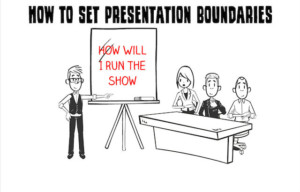Are you someone who “adds value” when presenting?
If you are not someone who adds value, your audience might think that you are wasting their time.
To get over this fear, I came up with criteria that I use to judge my presentations to make sure they are value adding.
You probably hear the phrase “value adding” a lot these days, and I thought this would be helpful for you to gain clarity around what that means.
To make sure your presentations are “value adding” run them against the following criteria and ensure they fulfill at least one of the guidelines below.
It could be an opportunity to improve your presentations or validate that they are value adding.
1- Your presentation has to be audience-centric
Your presentation is for the audience and NOT for your ego. The slides, the design, the level of information, and the language is there to serve the audience first. The ego may get a little bit of space in the presentation – However, the lion’s share goes to the audience.
The best way to do this is by focusing on your audience the entire time you are creating your presentation.
2- The information you present has to be practical, applicable, and simple
Find ways to make the content in your speech practical, applicable, and simple, especially, if your topic is theoretical or highly technical.
To make it concrete and relevant: look for ways to relate the topic back to your audience and show them how this benefits them at the individual, group, and organizational levels.
To simplify your message, constantly look for analogies, stories, and statistics that will make the content of your speech easier for your audience to understand. Making things simple takes a lot of thought and work and is worth the investment for you and your career.
3- The information you deliver advances a collective goal
Make sure that what you say has the purpose of moving things forward for your team or your clients. All too often, professionals present just for the sake of presenting.
Always be aware of your department and company’s goals and make sure every presentation advances and contributes to the advancement of at least one of those goals.
The size of the advancement does not matter as long as there is some movement forward.
4- Present something new (to at least some of the audience members)
New could mean new information, new learning, new ideas, or a new perspective. And remember that the information does not have to be new to everyone – it just has to be new to some.
Conclusion
Any time doubt crosses your mind, and you think you might be wasting your audience’s time, run through this criterion and double check that your content is aligned with it.
Make sure it fulfills, at least, one of the criteria above and, of course, the more criteria it meets, the better.
It will make you feel more confident about your content and will make sure that the audience will get value out of what you say.




